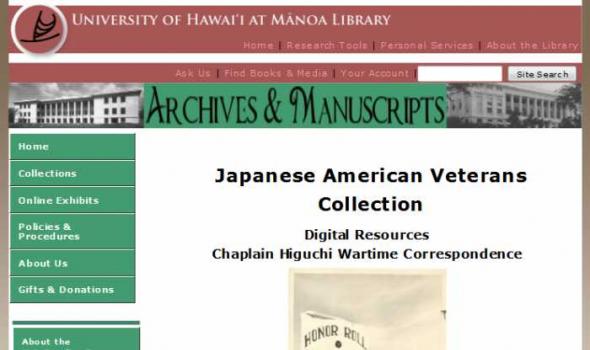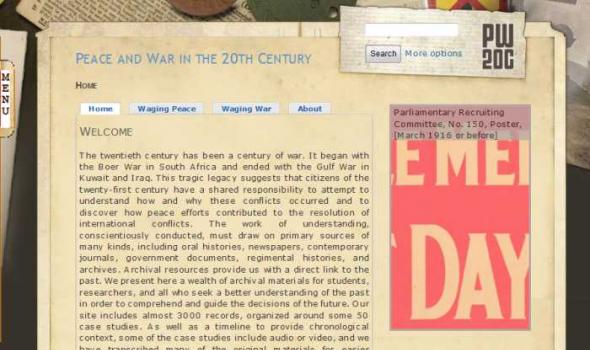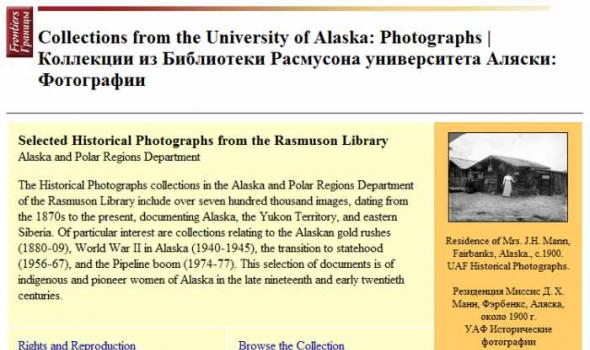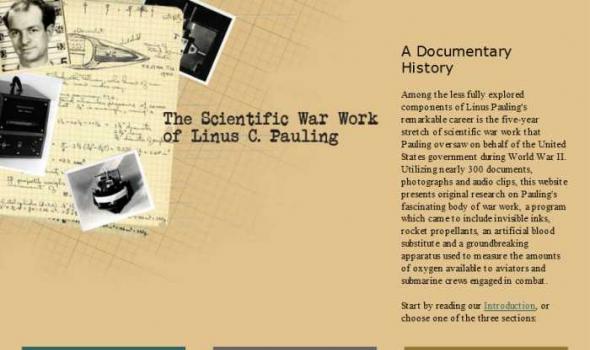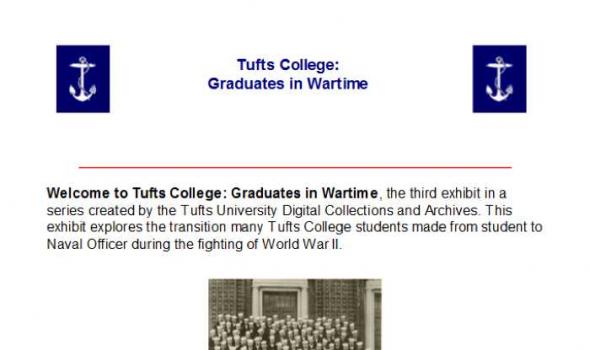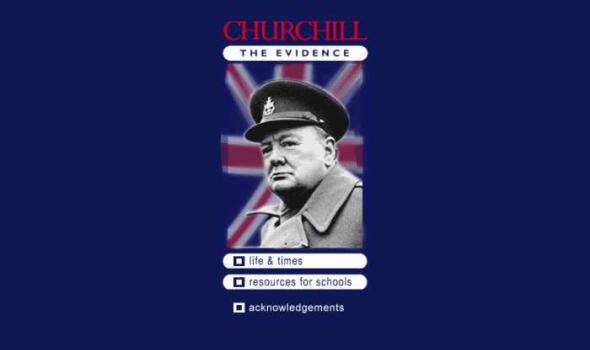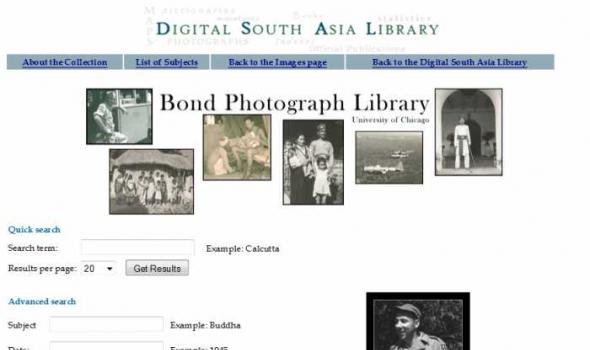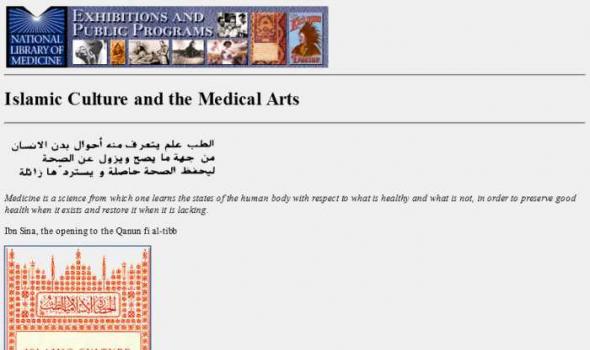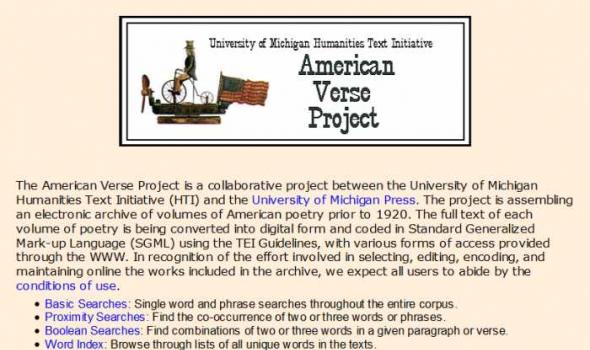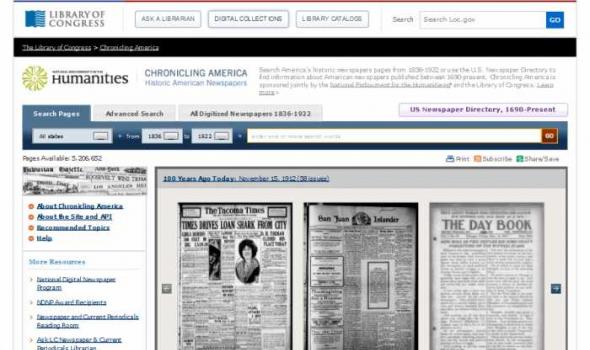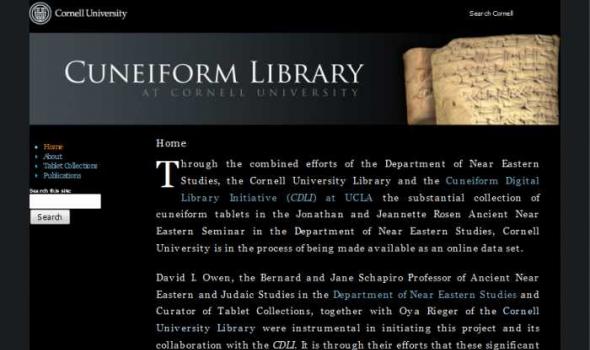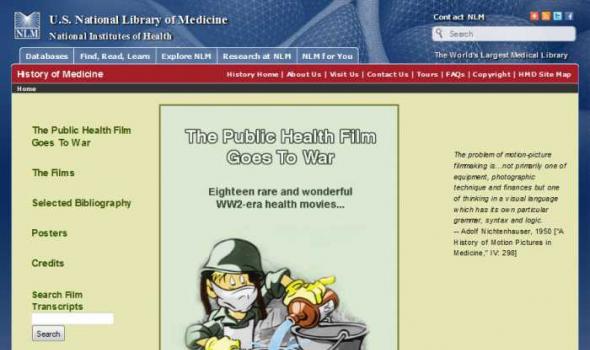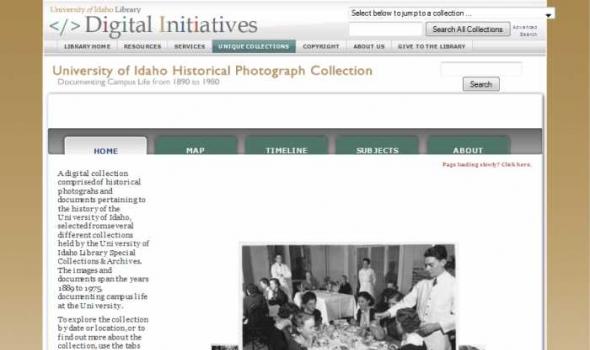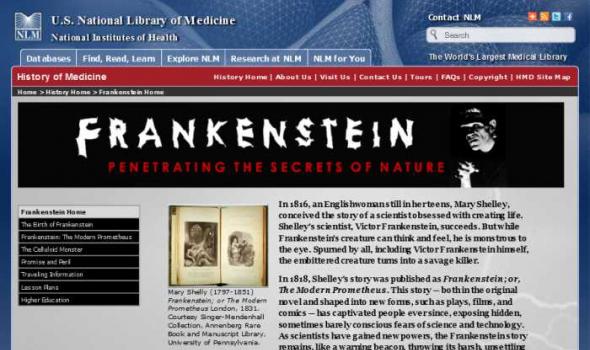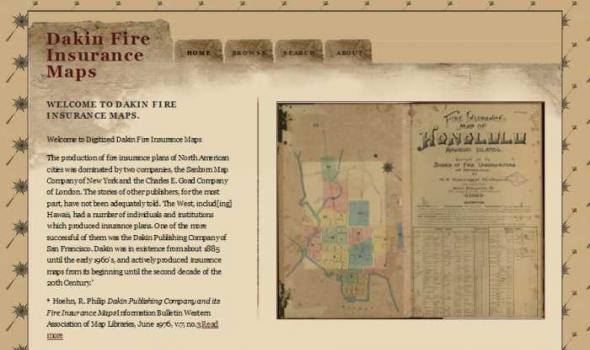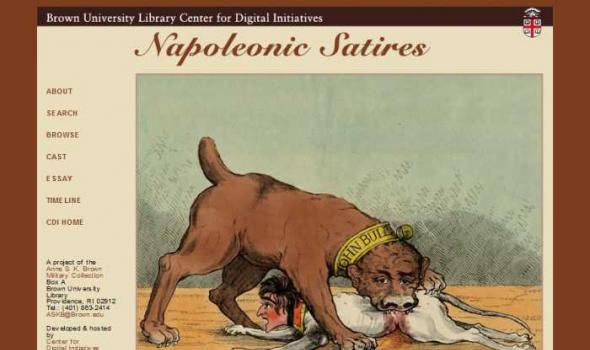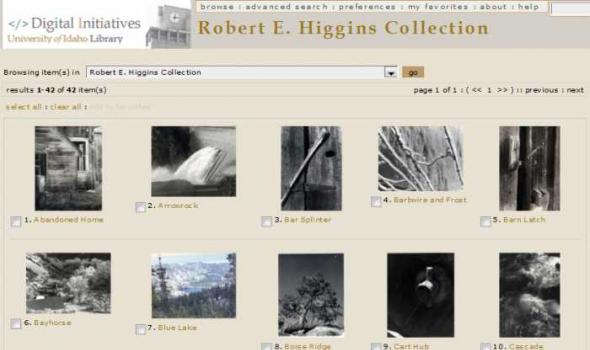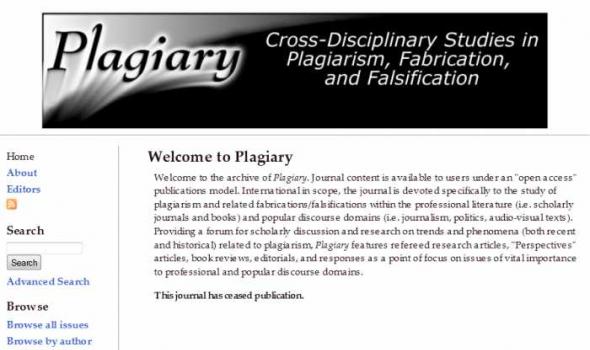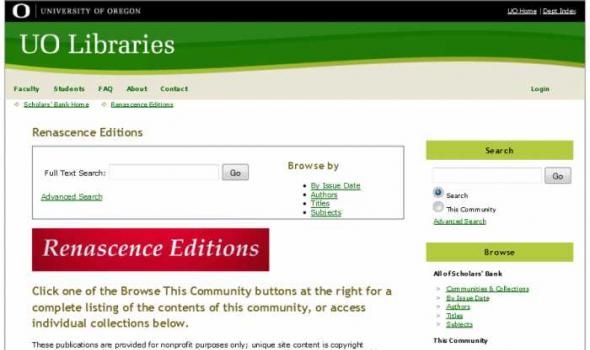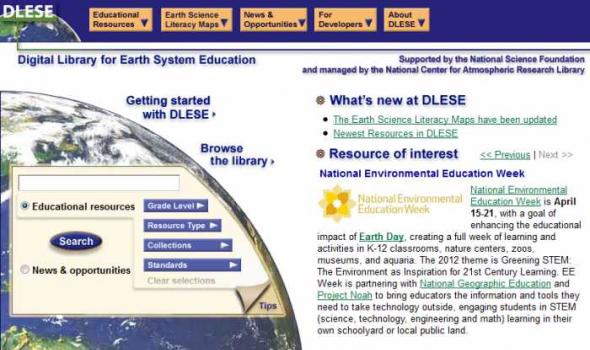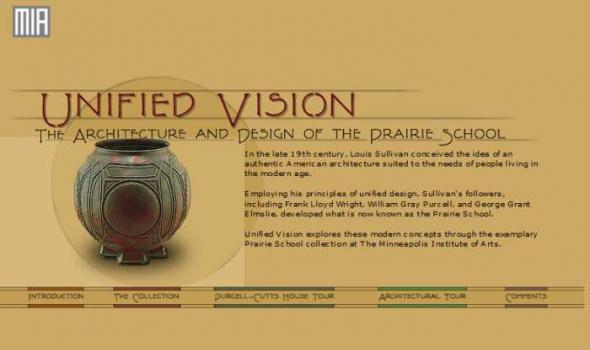Category: World War 2
Results
Japanese American Veterans Collection Chaplain Higuchi Wartime Correspondence During World War II, Hiro Higuchi of Hawaii volunteered to serve as one of two chaplains attached to the 442nd Regimental Combat Team, an all-Japanese American unit formed in January 1943. Following his enlistment, Higuchi attended the U.S. Army Chaplain School at Harvard University in the fall of 1943. In November 1943, he joined the soldiers of the 442nd RCT for intensive training at Camp Shelby, Mississippi. In June 1944, Higuchi accompanied the 442nd RCT to Europe, where he served with the unit in Italy and France. Chaplain Hiro Higuchi returned home to Hawaii in December 1945.
Peace and War in the 20th Century Welcome The twentieth century has been a century of war. It began with the Boer War in South Africa and ended with the Gulf War in Kuwait and Iraq. This tragic legacy suggests that citizens of the twenty-first century have a shared responsibility to attempt to understand how and why these conflicts occurred and to discover how peace efforts contributed to the resolution of international conflicts. The work of understanding, conscientiously conducted, must draw on primary sources of many kinds, including oral histories, newspapers, contemporary journals, government documents, regimental histories, and archives. Archival resources provide us with a direct link to the past.
Collections from the University of Alaska: Photographs. The Historical Photographs collections in the Alaska and Polar Regions Department of the Rasmuson Library include over seven hundred thousand images, dating from the 1870s to the present, documenting Alaska, the Yukon Territory, and eastern Siberia. Of particular interest are collections relating to the Alaskan gold rushes (1880-09), World War II in Alaska (1940-1945), the transition to statehood (1956-67), and the Pipeline boom (1974-77). This selection of documents is of indigenous and pioneer women of Alaska in the late nineteenth and early twentieth centuries. Residence of Mrs. J.H. Mann, Fairbanks, Alaska., c.1900. UAF Historical Photographs.
ABOUT THE CAMP The Kooskia (pronounced KOOS-key) Internment Camp is an obscure and virtually forgotten World War II detention facility that was located in a remote area of north central Idaho, 30 miles from the town of Kooskia, and 6 miles east of the hamlet of Lowell, at Canyon Creek. The camp was administered by the U.S. Immigration and Naturalization Service (INS) for the U.S. Department of Justice. It held men of Japanese ancestry who were termed "enemy aliens," even though most of them were long-time U.S. residents.
Rt. Hon. Arthur Meighen, address to the Senate, September 10, 1939. In September 1939, Canadians prepared for another war with memories of the Great War still fresh in their minds. It was determined that Canada’s war effort would be concentrated in financial and industrial support, and the first priority would be to secure the nation’s borders. By the spring of 1940, the progress of the war in Europe had changed dramatically. With the German invasion of Denmark, Norway, Belgium and Holland, and the fall of France, Canadians reassessed their own vulnerability. The spectre of a German victory became real.
This exhibit highlights the contributions of the thousands of Americans, both military and civilian, who served their country during World War II. Documents from the National Archives and Records Administration's (NARA) National Personnel Records Center in St. Louis form the core of the exhibit. For those who lived through the Second World War, this exhibit may help them recall their experiences. For those who did not, it is hoped they will gain a deeper understanding of the sacrifice and commitment of those Americans who, after almost four years, were "A People at War."
Note that Albert Einstein is standing to the left of the President. This group shot was taken by Fred Scut of Washington, DC, one of the most prolific of panoramic photographers. The print size is 38" x 10". Records of the Office of the Secretary of Agriculture (16-ES-485) The description was handwritten on the photograph by Mr. Brooks. It was taken by Thompson Photo of Venice, CA, and measures 46" x 10". Records of the Bureau of Indian Affairs (75-PA-3-7) The photographer and date are unknown. The dimensions of the print are 54" x 10".
The three sections of The Scientific War Work of Linus C. Pauling combine to provide an unusually rich source of information on Linus Pauling's intriguing body of research conducted on behalf of the Allied effort during World War II. Navigate between the sections by using the links on the site's home page or by using the links at the top of any page within the site. Narrative - The first section tells the story of Pauling's work with the National Defense Research Committee, among other important groups, in developing tools meant to benefit the Allied cause in the European and Pacific theatres.
About - University of Oregon. Office of the Dean of Personnel Administration. National Japanese American Student Relocation Council Records 1942-1946 The National Japanese American Student Relocation Council was created by university administrators as a means of relocating Japanese American college students to other universities and colleges away from the West coast during World War II, and to prevent these students from being interned in government-run internment camps. At the University of Oregon, Karl Onthank, Dean of Personnel Administration, represented the University in relocating UO Japanese American students. The collection includes correspondence, newsletters, speeches, minutes of meetings, and ephemera.
The Collection The 102 photographs in this collection document the activities of Oregon's Bracero workers - their cultivation and harvesting work in the fields and orchards as well as the farm labor camps in which they lived. Most of the photographs were taken by Oregon State College Extension staff members as part of a larger effort to document the various groups that contributed to alleviate the state's severe shortage of farm labor. Extension photographers included John Burtner, Fred Shideler, Robert Fowler, and Harry Whitten.
This web exhibit is an electronic version of an exhibit mounted in the Tisch Library located on Tufts University's Medford Campus. The exhibit will run from October, 2000 through March, 2001. Funding for the exhibits is provided by Tufts alumni who were part of the United States Navy Officer Training Programs on the Medford Campus from 1941-1972. The exhibit was designed and mounted by Patricia Hughes, G2000. Material used in this exhibit is now housed in the Digital Collections and Archives.
Tufts College: Graduates in Wartime Welcome to Tufts College: Graduates in Wartime , the third exhibit in a series created by the Tufts University Digital Collections and Archives. This exhibit explores the transition many Tufts College students made from student to Naval Officer during the fighting of World War II. This online exhibit was created in conjunction with an exhibit on display in the Tisch Library from January until September 2002. The physical exhibit was designed and mounted by Tatiana Sizonenko, and the web exhibit was created by Patricia Hughes G2000. The entire series of exhibits has been funded by a committee of alumni and veterans of the U.S.
Tufts College: A Wartime Campus, 1943-1946 Welcome to Tufts College: A Wartime Campus , the second exhibit in a series created by the Tufts University Digital Collections and Archives. This exhibit explores the experience of students attending Tufts College during World War II. Raising of Colors This online exhibit was created in conjunction with an exhibit on display in the Tisch Library from April until September 2001. Both exhibits were designed by Amanda Yost, G2001. The entire series of exhibits has been funded by a committee of alumni and veterans of the U.S. Navy programs that were on Tufts' campus from 1941-1972.
About the Collection This digital collection presents over 90 photographs taken by Harrison Forman at the outbreak of World War II in Poland. The photographic collection is supplemented by a selection of newspaper clippings and an article "Filming the Blitzkrieg," published by Forman in Travel magazine in December 1939. The photographs, documenting the Nazi invasion of Poland in September of 1939, were recently discovered in the American Geographical Society Library at the UWM Libraries. The images are part of the extensive Harrison Forman Collection that was donated to the American Geographical Society Library in 1987. Harrison Forman (1904-1978), a Wisconsin native, was an adventurous journalist, photographer, and explorer.
Propaganda – A Weapon of War is a small snapshot of Second World War propaganda that can be found in the National Library of Scotland’s collections.
Between 1939 and 1945, both Allied and Axis Governments greatly influenced wartime behaviour and attitudes through propaganda. This took various forms: the printed word and pictorial leaflets, radio broadcasts and cinema and poster campaigns.
White propaganda was mostly practical information intended for the Home Front. Black propaganda targeted enemy morale, and there was a strong Scottish involvement in the clandestine organisation that developed it – the Political Warfare Executive.
On this website you'll find examples of British Government propaganda, from 'Make do and Mend' to 'Tag und Nacht'.
This exploration of the life of Sir Winston Churchill has been created by the National Library of Scotland and the Churchill Archives Centre, and is based on a major exhibition in the National Library of Scotland in the summer of 1999. It uses original documents and photographs to tell the story of one of the twentieth century's most important figures.
The Bond collection consists of photographs taken during World War II by Frank Bond while serving in the Army Air Corps, 40th Photographic Reconnaissance Squadron, stationed in India and Burma. The squadron was formed in 1943 and transferred by sea to India in 1944. In India, the unit was assigned first to Gushkara, approximately sixty miles west of Calcutta, and then to the Alipore Air Base in suburban Calcutta. Bond was a specialist in the development of film from aerial photography that provided essential intelligence to the Allied forces during their advance through central Burma. As the campaign in Burma progressed, Bond was transferred to Akyab Island in the Bay of Bengal where he helped to establish the field photographic developing and printing laboratory.
